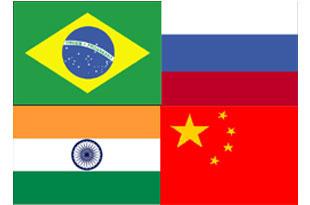With the new Indian government showing signs of economic reforms and brings in transparency in governance, the World Bank feels that the world's third- largest economy could achieve a growth rate of 5.5 per cent this year as compared to 4.7 per cent last year.
"I think there is, overall a sense that that recognition of the need for domestic solutions to policies is increasingly evident in India, as well," World Bank economist Andrew Burns told reporters during a conference call yesterday.
Burns, lead author of the World Bank global economic outlook and the head of the team in the Macro Group, said, "The situation in India has obviously gone through a difficult period for the last couple of years, with growth below 5 per cent after several years after it was eight and even higher."
"Much of that has been a reflection of this process of being overheated and over-inflated, and a natural slowing of the economy. But there has also been a concern that the domestic reform process had lost momentum," Burns said.
"We saw early signs, I think, even before of the election, of a deb locking of some of these obstacles. We saw a number of investment projects that had been held back being given the go-ahead. And all of that is part and parcel of our forecast which, for India, is for growth to accelerate from 4.7 per cent last year to 5.5 per cent this year, 6.3 per cent next year, and 6.6 per cent in 2016," Burns said.
According to the report, GDP growth in South Asia slowed to an estimated 4.7 per cent in market price terms in calendar year 2013 (2.6 percentage points below average growth in 2003-12). This weakness mainly reflects subdued manufacturing activity and a sharp slowing of investment growth in India.
Firming global growth and a modest pickup in industrial activity should help lift South Asia's growth to 5.3 per cent in 2014, rising to 5.9 per cent in 2015 and 6.3 per cent in 2016.
Most of the acceleration is localised in India, supported by a gradual pickup of domestic investment and rising global demand.
Developing countries are headed for a year of disappointing growth, the World Bank said in its Global Economic Prospects (GEP) report, which has lowered its forecasts for developing countries to 4.8 per cent growth rate this year from the January estimate of 5.3 percent.
In its latest report, the Bank has lowered its forecasts for developing countries, now eying growth at 4.8 per cent this year, down from its January estimate of 5.3 per cent.
Signs point to strengthening in 2015 and 2016 to 5.4 and 5.5 per cent, respectively.
China is expected to grow by 7.6 per cent this year, but this will depend on the success of rebalancing efforts. If a hard landing occurs, the reverberations across Asia would be widely felt, the Bank said.
"Growth rates in the developing world remain far too modest to create the kind of jobs we need to improve the lives of the poorest 40 per cent," said World Bank Group President Jim Yong Kim.
"Clearly, countries need to move faster and invest more in domestic structural reforms to get broad-based economic growth to levels needed to end extreme poverty in our generation," Kim said.
The global economy, it said, is expected to pick up speed as the year progresses and is projected to expand by 2.8 per cent this year, strengthening to 3.4 and 3.
5 per cent in 2015 and 2016, respectively.
High-income economies will contribute about half of global growth in 2015 and 2016, compared with less than 40 per cent in 2013, it added.
Kaushik Basu, Senior Vice President and Chief Economist at the World Bank said the financial health of economies has improved.
"With the exception of China and Russia, stock markets have done well in emerging economies, notably, India and Indonesia. But we are not totally out of the woods yet," he said.
"A gradual tightening of fiscal policy and structural reforms are desirable to restore fiscal space depleted by the 2008 financial crisis. In brief, now is the time to prepare for the next crisis," Basu said.
In a conference call with reporters, Andrew Burns, lead author of the World Bank report and the head of the team in the Macro Group told reporters the forecast has been revised downwards relatively substantially.
"So, for global growth, we're calling for 2.8 per cent growth now. It was 3.2 per cent in January. High-income countries marked down from 2.2 to 1.9 per cent, and developing country growth marked down from 5.3 to 4.8 per cent," he said.
On the debt-to-GDP ratios, he said, there are a number of economies-- including Ghana, South Africa, Kenya and Malaysia, arguably India, where the Bank feels that monetary--or fiscal policy, rather, remains quite expansionary where debt-to-GDP ratios have been rising and where this recommendation for some tightening in policy going forward seems to be particularly relevant.
"In the case of Brazil, Brazil is a country like Turkey, like India, which has, over the past couple of years, had disappointing growth, in part, we think, because of the strength of the rebound in the immediate post-crisis period that reopened positive output gaps, generated domestic imbalances, that really force growth to slow down in order to remove those imbalances, and I'm talking inflation, high current account deficits in that regard," Burns said.
PTI






